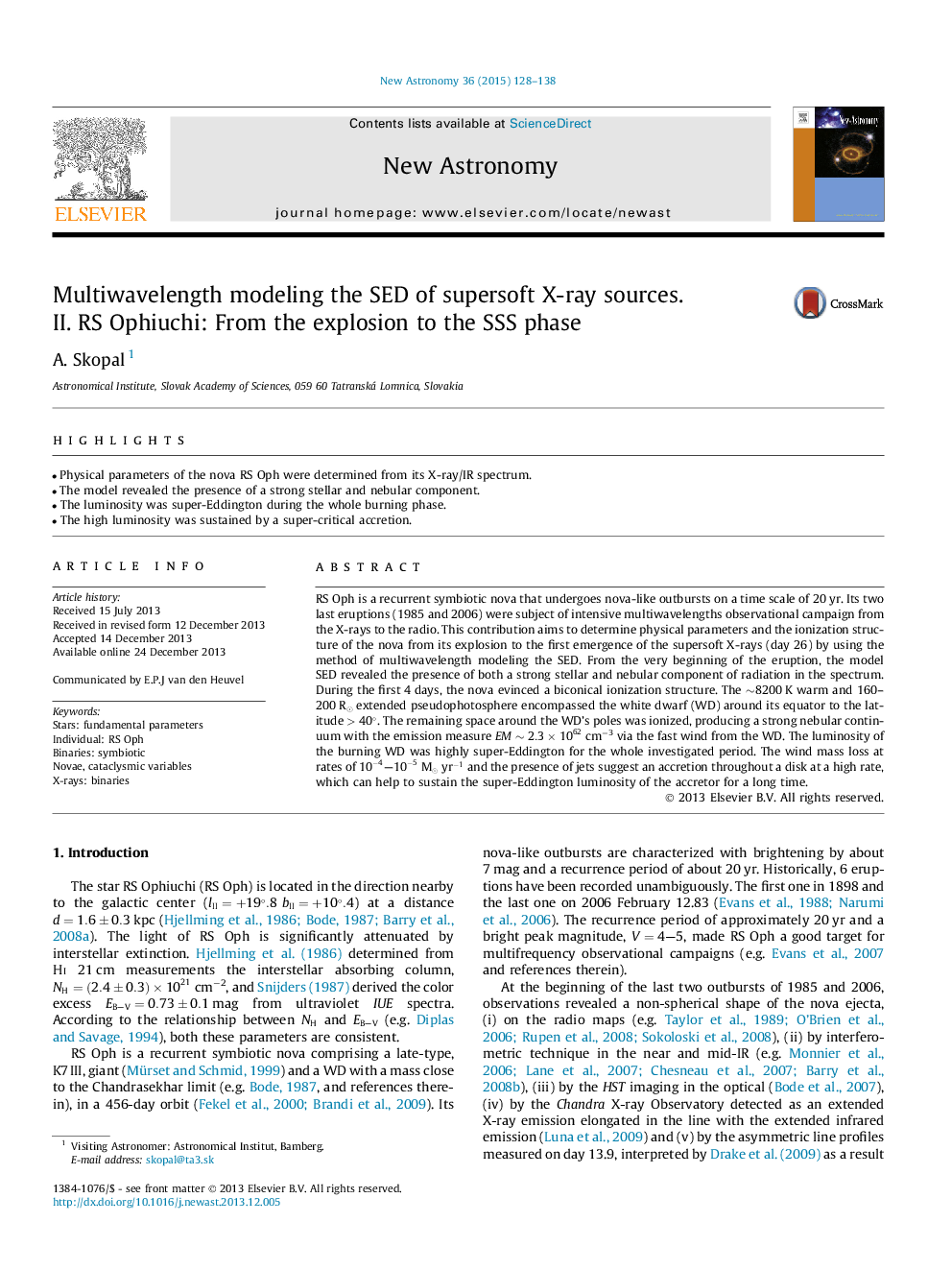| Article ID | Journal | Published Year | Pages | File Type |
|---|---|---|---|---|
| 1778889 | New Astronomy | 2015 | 11 Pages |
•Physical parameters of the nova RS Oph were determined from its X-ray/IR spectrum.•The model revealed the presence of a strong stellar and nebular component.•The luminosity was super-Eddington during the whole burning phase.•The high luminosity was sustained by a super-critical accretion.
RS Oph is a recurrent symbiotic nova that undergoes nova-like outbursts on a time scale of 20 yr. Its two last eruptions (1985 and 2006) were subject of intensive multiwavelengths observational campaign from the X-rays to the radio. This contribution aims to determine physical parameters and the ionization structure of the nova from its explosion to the first emergence of the supersoft X-rays (day 26) by using the method of multiwavelength modeling the SED. From the very beginning of the eruption, the model SED revealed the presence of both a strong stellar and nebular component of radiation in the spectrum. During the first 4 days, the nova evinced a biconical ionization structure. The ∼8200 K warm and 160–200 R⊙ extended pseudophotosphere encompassed the white dwarf (WD) around its equator to the latitude >40°>40°. The remaining space around the WD’s poles was ionized, producing a strong nebular continuum with the emission measure EM∼2.3×1062EM∼2.3×1062 cm−3 via the fast wind from the WD. The luminosity of the burning WD was highly super-Eddington for the whole investigated period. The wind mass loss at rates of 10-4–10-5M⊙yr-1 and the presence of jets suggest an accretion throughout a disk at a high rate, which can help to sustain the super-Eddington luminosity of the accretor for a long time.
